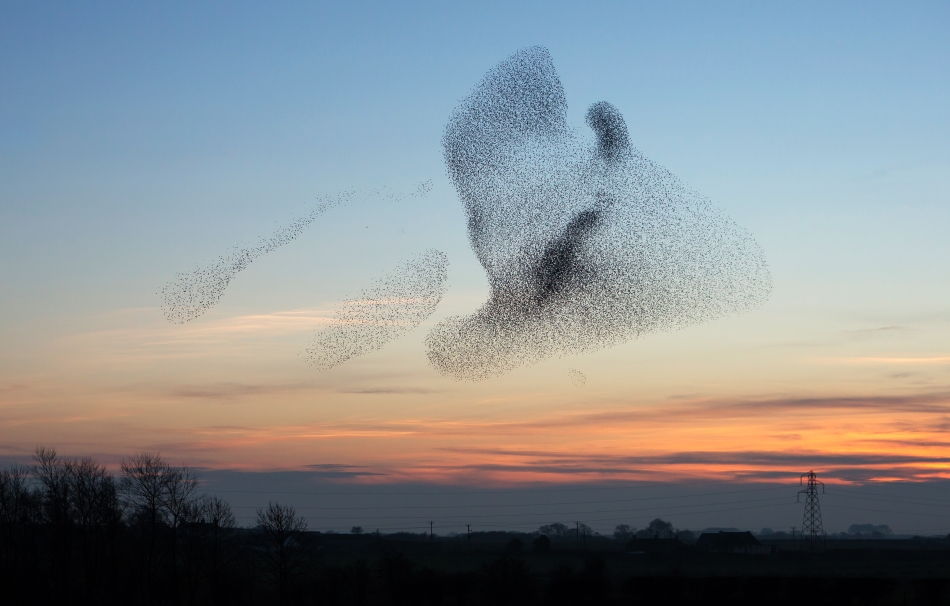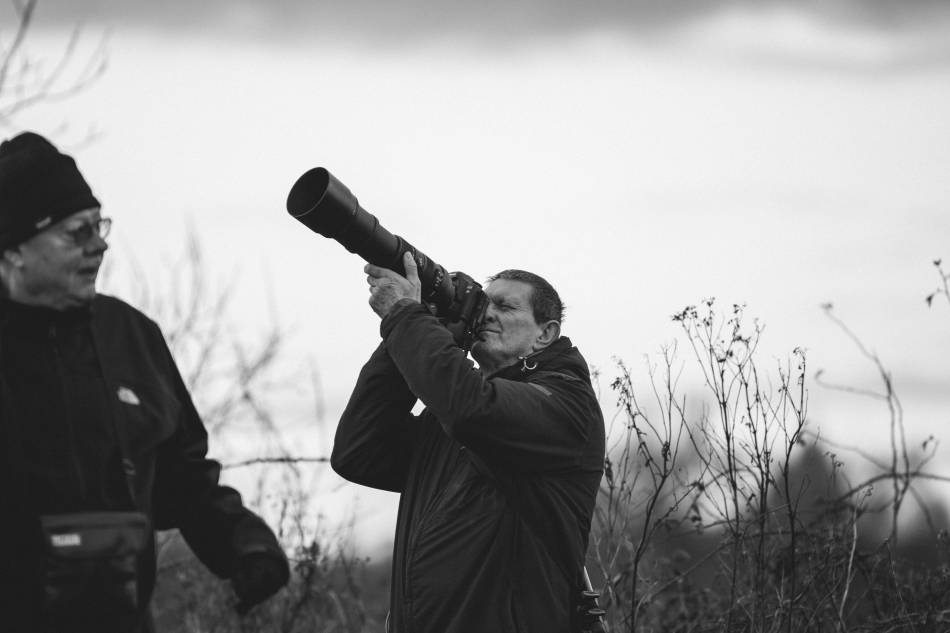For the next half hour, the event builds towards its climax. First, small flocks appear from all four corners of the compass, making a whooshing sound as the air ruffles their wings, which is the reason we call a large gathering of starlings a murmuration. As they reach the reedbed, some fly straight over, while others begin to gather in larger and larger flocks.
For first-time viewers, this is exciting enough, as the gasps and squeals of delight bear witness. But old hands know that this is simply the overture to the main event. The performance does not always go to plan though: some evenings the birds arrive and decide to plunge right down into the reeds almost straight away where they will spend the night, leaving the crowds hungry for more.
But tonight, I have a good feeling. And my faith is justified. In the distance, a vast cloud of what at first looks like smoke crystallises into a huge flock of starlings. As they come nearer, they move closer and closer together, until they form a huge black cloud, right above the reedbed.

We’re into the main act now. The cloud reforms into a tall tower of black, before – without any warning – shape-shifting in the skies above our heads. Over the next few minutes we enjoy a classic series of ‘wow’ moments, as the starling flock behaves like a single organism, swirling and spinning, eddying and churning, rolling and blending. The watchers are ecstatic; I am simply relieved.
Then, as the sun finally falls below the horizon, and the sky begins to darken, the birds go to roost. It is as if someone has pulled the plug out of a tub of swirling water. A stream of black pours straight down into the reeds, as the sky above empties of birds. A tipping point has been passed, and the birds’ only imperative now is to find a safe place to spend the night.
Next, the noise. While airborne, starlings do not call at all; but as soon as they have landed in the reeds they start to chatter. At first this is hardly audible above the buzz of the watching crowd; but within a few minutes the sound of the birds drowns out their voices, and the people fall silent. Scanning with my binoculars, I can see individual starlings jostling for position; when I look with the naked eye all I can see is a long strip of black obscuring the pale colour of the reeds.

Then darkness finally falls, and the show is over. The crowd disperses, excitedly recalling the high points of the evening. I linger behind. Even though it is too dark for me to see, I can hear the waves of chatter as the starlings settle down to sleep.
So why do starlings gather in such huge flocks on winter evenings? The simple answer is that there is safety in numbers. If these birds chose to spend the night on their own or in smaller flocks, they could be vulnerable to predators such as peregrine falcons and sparrowhawks.
You might think that these hunters would welcome an even bigger gathering but, in fact, they struggle to target individual birds in such a huge mass, and often give up the chase. This means that for each individual starling, the chances of being taken by a predator are far lower if they join forces with their fellows. They can also stay much warmer. Keeping up their energy levels is crucial at this time of year, and by spending the night huddled with their neighbours in a vast reedbed the birds can ensure that they retain precious heat.
Finally, they use the roost to communicate with one another. Although they appear to be ‘chatting’, what they are actually doing is far subtler. Any starling that has not been able to find enough food that day will seek out the healthiest looking starlings, which have. The next morning, they stick close to those birds and so get to find the best places to feed.